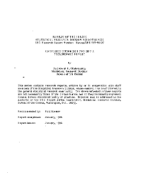
An official website of the United States government
Here’s how you know
Official websites use .gov
A .gov website belongs to an official government organization in the United States.
Secure .gov websites use HTTPS
A lock (
) or https:// means you’ve safely connected to the .gov website. Share sensitive information only on official, secure websites.
-
//
- Census.gov /
- Library /
- Census Working Papers /
- Composite Estimation for SIPP: A Preliminary Report
Composite Estimation for SIPP: A Preliminary Report
Composite Estimation for SIPP: A Preliminary Report
Introduction
The Survey of Income and Program Participation (SIPP) will undoubtedly become a major source of data on the economic situation of households, families and individuals in the United States. The SIPP began in October 1983 as an ongoing survey program of the Bureau of the Census with a sample of approximately 25000 “designated” housing units selected to represent the noninstitutional population of the United States. Each sample household will be interviewed once every four months for 2 1/2 years to produce sufficient data for longitudinal analyses. The reference period is the four months preceding the interview; for example, in October, the reference period is June through September. When the household is interviewed again in February, it is October through January. In February 1985 and every February thereafter, a new slightly smaller sample will be introduced. This overlapping panel design will enhance estimates of levels, and change, particularly year to year change. To facilitate field operations, each panel is divided into four approximately equal subsamples called rotation groups; one rotation group will be interviewed in a given month. Thus, one cycle or “wave” of interviewing generally takes four consecutive months. Figure 1 provides an illustration of the relationship between waves, rotation groups, interview months, and reference periods after the sample becomes fully operational in 1985. For further details of the design of the survey and plans for publication of reports see Nelson, McMillan and Kasprzyk (1984).
Others in Series
Working Paper
Working Paper
Working Paper
Share
Related Information
WORKING PAPER
Statistical Research Reports and StudiesSome content on this site is available in several different electronic formats. Some of the files may require a plug-in or additional software to view.
 Yes
Yes
 No
NoComments or suggestions?


Top

